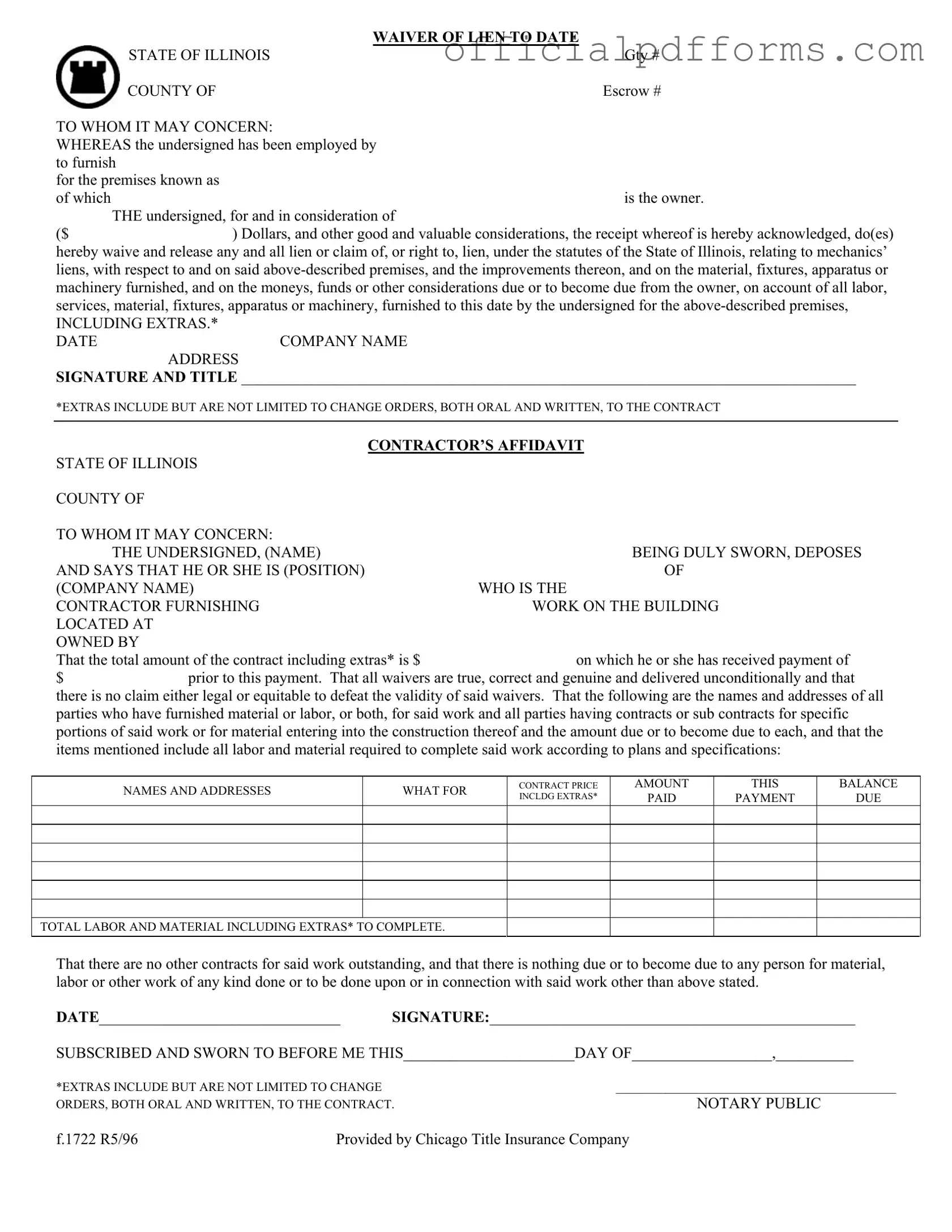The Chicago Title Waiver Format form serves to waive and release any lien claims related to mechanics' liens for work performed on a property. By signing this document, contractors acknowledge receipt of payment and relinquish their right to file a lien against the property for the labor, materials, or services provided. This form is crucial for ensuring that property owners can proceed with their projects without the threat of lien claims from contractors or subcontractors.
This form is primarily used by contractors, subcontractors, and suppliers who have provided labor or materials for a construction project. It is important for anyone who has a financial interest in the work done on the property to utilize this form to protect both their interests and the interests of the property owner. Property owners may also request this waiver from contractors to ensure that no outstanding claims could later affect their ownership rights.
To properly complete the Chicago Title Waiver Format form, several key pieces of information must be provided:
-
Company name of the contractor or supplier.
-
The property address where the work was performed.
-
The total amount of the contract, including any extras.
-
The amount already paid prior to signing the waiver.
-
The names and addresses of all parties involved in providing labor or materials.
-
The balance due for the work completed.
-
The date of the waiver and the signature of the contractor or supplier.
Completing all sections accurately is essential for the validity of the waiver.
In this context, "extras" refer to any additional work or materials that were not originally included in the contract but are necessary for the completion of the project. This can include change orders, which may be either oral or written. It is important to note that when completing the waiver, any extras should be clearly documented to avoid confusion or disputes regarding payment.
What happens if the waiver is not executed?
If the Chicago Title Waiver Format form is not executed, the contractor retains the right to file a lien against the property for the unpaid labor or materials. This can create significant legal and financial complications for property owners, as liens can lead to foreclosure actions or other legal disputes. Therefore, it is advisable for both parties to complete and sign the waiver to ensure clarity and avoid potential conflicts.
Is notarization required for the waiver?
Yes, notarization is required for the Chicago Title Waiver Format form. The signature of the contractor or supplier must be witnessed by a notary public to ensure the authenticity of the document. This step adds a layer of legal protection and verifies that the individual signing the waiver is indeed authorized to do so.
Can the waiver be revoked once signed?
Once the Chicago Title Waiver Format form is signed and delivered, it generally cannot be revoked. The waiver serves as a legal acknowledgment that the contractor has received payment and relinquishes any future claims against the property. However, if there are specific concerns or disputes regarding the waiver, it may be advisable to consult with a legal professional to explore any potential remedies or actions.
